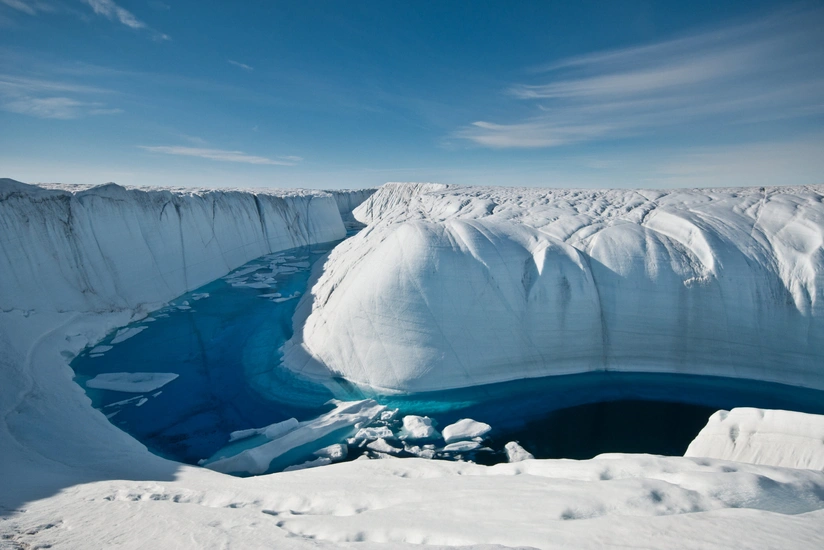Greenland ice sheet melting rapidly
- 02 August, 2021
- 05:31

Researchers say the Greenland ice sheet shed enough water in one day "to cover Florida with two inches of water." Experts fear an acceleration of the trend as atmospheric patterns change and temperatures rise.
The Greenland ice sheet experienced a "massive melting event" this week, releasing enough mass "to cover Florida with 2 inches (5 centimeters) of water," according to Danish government researchers who monitor the ice sheet, Report informs via DW.
The researchers, who post the results of their monitoring on the website Polar Portal, said the melting event on July 28 was the third-largest single-day loss of ice in Greenland since 1950 — with the others happening in 2012 and 2019.
Although the 2019 event was more significant by volume, researchers say the latest event affected a bigger area.
An estimated 22 gigatonnes of ice melted from the sheet on July 28.
More than half of that mass (12 gigatonnes) flowed into the ocean, according to climate scientist Xavier Fettweis of the University of Liege in Belgium.
He noted that prior heavy snowfall allowed the remaining ten gigatonnes to be absorbed and potentially refrozen.
A gigatonne is a unit of mass equivalent to one billion metric tons or 2.2 trillion pounds.
Scientists have pointed to changes in atmospheric circulation patterns as a determining factor, noting that the exceptionally rapid melting followed warm air being trapped over the Arctic island.
The Danish Meteorological Institute is currently reporting summer temperatures exceeding 20 degrees Celsius in northern Greenland — twice the summer average.
On July 29, thermometers in the region hit 23.4 degrees Celsius.
Greenland, the world's largest non-continental island, is also home to the only permanent ice sheet on earth beyond Antarctica.
That fact makes it the second-largest mass of fresh water on the planet — the Greenland ice sheet and Antarctica contain 70% of the world's freshwater.
Scientists estimate global sea levels could rise between 6 and 7 meters if the sheet were to melt entirely.
